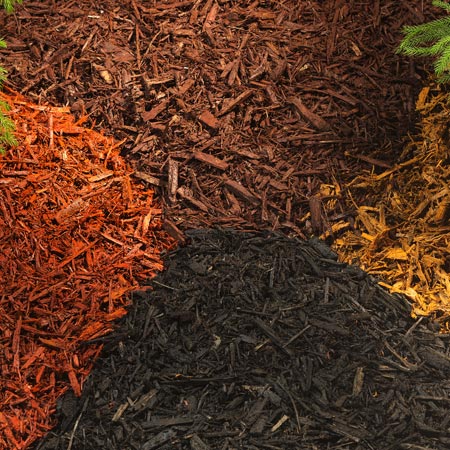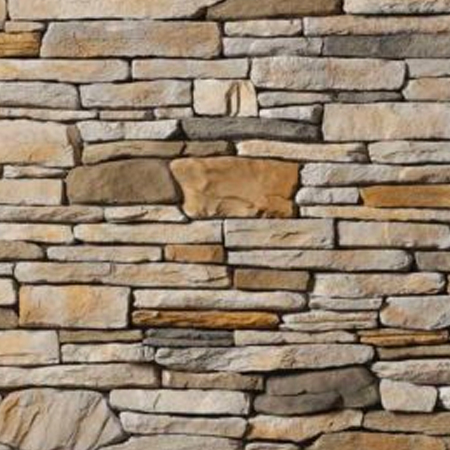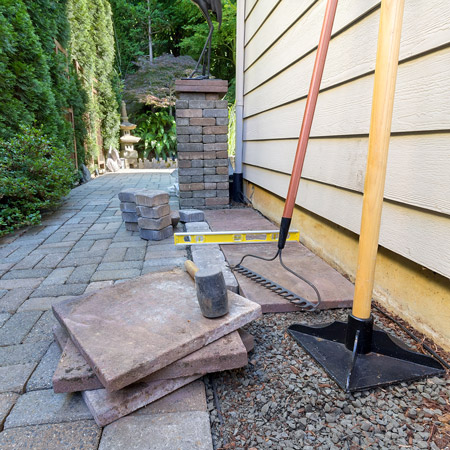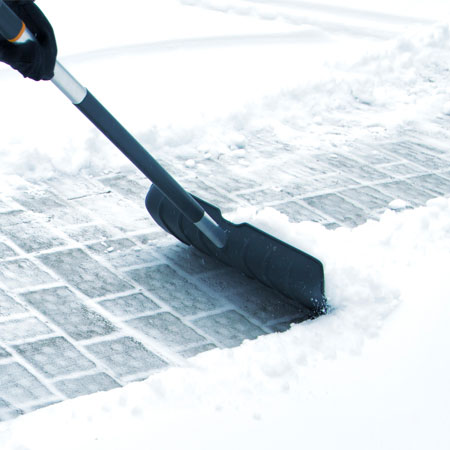
With DIY landscaping and outdoor living decorating becoming such a big trend across America, it can be deceiving to read an article about the “best edging materials” only to discover that those materials were more suited for a home in the forests of Oregon or in the deserts of Nevada than your own home right here in the northeast. The focus of this article will be on learning how to edge a lawn to your advantage based on the conditions and specific requirements of living in the unique area of Rhode Island and Southeastern Massachusetts.
What Does Edging Do?
Before you can choose what type of landscape edging materials to use or even begin to think about how to edge a lawn, you need to think about the practical purpose and function of edging for Providence homeowners. The purpose of edging is to keep specific elements out of each others’ space, such as grass out of a flower garden, plants out of a lawn, grass away from the base of a tree or even decorative rocks out of your mulch.
Edging is also a great way to provide definition for your landscape, add texture to a primarily plant-based or rock-based garden and add a touch of natural color. Too much edging can interrupt the look and flow of your garden. Choosing the wrong type of edging can be costly and can be easily damaged if it is placed in an area where the lawnmower or weed whacker might hit it. There are many reasons why the best edging materials should be chosen specifically with thought to the unique needs and layout of your residential landscape.
Where Should Edging Be Used?
We have already established that there are lots of ways that landscape edging materials can be used. It is important to use at least some type of edging to separate two different types of groundcover. This prevents the two from mixing or from plants, weeds and grass from growing in an area dedicated to loose rocks, pathways, walkways, driveways or other hardscaped areas. When deciding how to edge a lawn, the materials chosen should be based on the location where the edging will be used and what it will be used to separate.
The common types of landscape edging materials include:
- brick
- natural stone
- pavers
- blocks
- metal
- plastic
- rubber
Manufactured Edging Materials
One type of edging that many Providence homeowners consider when they are deciding how to edge a lawn or garden is manufactured edging materials. These are often not the best edging materials because they can break or be broken much more easily than natural stone, bricks or blocks. The plastic and rubber variety of landscape edging materials are usually dark green, black or brown and are designed to create a specific line of definition, while still blending in with the dirt, grass and other surrounding elements of the landscape.
Metal edging is kind of a new approach at edging and can be used to separate not just lawn and gardens, but also to provide stability and definition for pavers used in driveways, patios, walkways and other hardscaping projects. Aluminum and steel are the two most common choices available, with some products being painted using a coating to increase longevity and durability and others remaining in their natural metallic color and state. Metal edging is more durable than plastic or rubber, but is still inferior to natural stone, brick or block landscape edging materials.
Lawn Edging Stone Materials
One of the most popular and widely used materials for homeowners in the northeastern states who want to learn how to edge a lawn are natural stone and manufactured stone or brick materials. These materials come in a wide variety of colors, shapes and sizes, all according to the unique needs, tastes and design of the northeastern homeowner. Lawn edging stone is also easy to install and maintain, making it a great choice all around.
Some of the lawn edging stone available for Providence homeowners include:
- solid granite cobblestones
- Techo-Bloc edgings
- clay facing brick
- concrete blocks
- natural wallstone
- boulders
- bluestone garden tumblers
- permeable pavers (Nantucket, Belgard, Pavestone, etc.)
- concrete pavers (Belgard, Pavestone, Techo-Bloc, etc.)
How to Edge a Lawn: Installation
To install your edging, see the manufacturers instructions to ensure that you dig a trench to the correct depth. You can figure this out yourself if you use a piece of edging as your guide. The top should be higher than the lawn or any other groundcover that you are separation, however it should not be so high that it sticks out and becomes too visible. Make sure that the lawn edging stone or other landscape edging materials do not become a tripping hazard.
Make sure that each piece is level with the one that was installed before it before moving on to the next section. Keep the gaps between lawn edging stone as small as possible, unless otherwise specified. For an even tighter fit you can use interlocking pavers. If you are using a rolled-type of manufactured landscape edging materials, make sure to level the material as you un-roll it to avoid creating a slope.
Where to Get Landscape Edging Materials in Providence
The best place to get any landscaping or hardscaping materials for Providence homeowners or property owners is at J&J Materials. With two locations in Southeastern Massachusetts and a delivery range that includes both Providence and Pawtucket, Rhode Islanders now have access to some of the top names and best edging materials in the business. Choose from a wide variety of products, such as Nantucket pavers, Belgard, Pavestone and Techo-Bloc, as well as natural stone materials mined from nearby Connecticut, Kentucky and Pennsylvania. Whatever your outdoor living project, J&J Materials has all of the natural stone, pavers and materials you need to get the job done.






